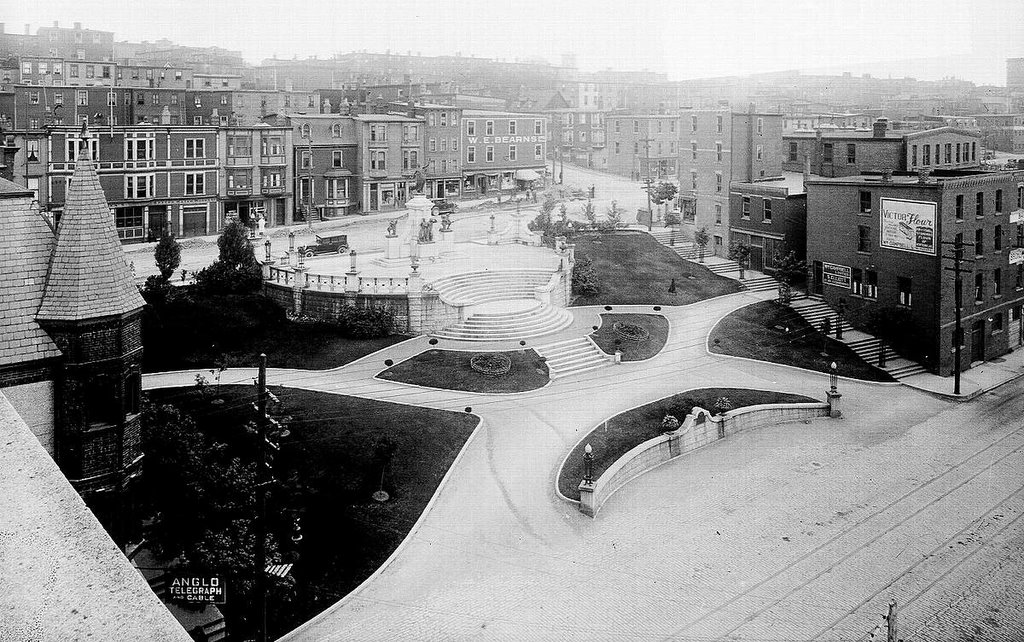 Left: The ethics constable just felt something was not right about the whole situation.
Left: The ethics constable just felt something was not right about the whole situation.Some of this stuff has been raised in other places but there's one people missed that really speaks to the need for much stronger restrictions on political contributions in the province.
Circumstances have changed dramatically since the early 1990s when the political contribution laws were last revised. There is a pressing need to revise them dramatically in light of the sort of things that have been going on over the past decade involving both the Liberal party and the Progressive Conservatives.
Here are two examples:
1. This is just plain wrong: There have been instances of town councils giving money to political parties. Like Cottlesville with the Liberals and Pasadena and Stephenville to the Tories in different years.
There is simply no reason for a town council to be spending public money in this way. Full stop.
2. This is just beyond wrong, if that's possible. Bond Papers previously raised questions about publicly funded entities - like health care foundations around the province - or other health-related charities taking donations from the Premier's family foundations.
The practice has continued in 2005. According to Revenue Canada's most recent filling on the Williams family Foundation, donations went to several health-related charities, some of which are directly tied to the provincial government:
- Dr. H. Bliss Murphy Cancer Care Foundation: $1, 000
- Trinity Conception Placentia Health Foundation: $500
- Cerebral Palsy Association: $500
- Newfoundland and Labrador Association for Spina Bifida and Hydrocephalus: $500
Then there's the Cox's Cove Wellness Foundation. Ed Joyce described the foundation this way in the House of Assembly in 2004:
This Foundation is a non-profit organization recently established in the Town of Cox'’s Cove for the sole purpose of helping residents of the town who are required to travel to other areas of the Province or out of Province for medical treatment.In this case, we have a foundation operated a municipality in the province that raises money to do what the provincial government is supposed to do: namely financially support people who have to head out of the province for medical treatment not available here.
Great purpose and God will surely smile on the Williams Family Foundation for this humanitarian effort. But the question we have to ask is why any foundation must exist in the province to do something government should be doing?
Fundamentally, the problem is this: one sort of organization is funded by the public purse or is operated by a public entity and may need to lobby for added funds.
It gets a bit sticky if the Premier is putting cash in your pocket, even if it is from a legitimate family charitable foundation. This money changing hands compromises both sides. And even if the set-up works on a particularly ethical set of politicians, there is nothing - absolutely nothing - to stop a future group of people with a less highly refined sense of ethics to start linking private charitable donations to political silence during times of controversy.
The other type of organization - the private charity - gets equally compromised if it has to take issue with a government decision having received moneylegitimatelyy given by a legitimate charity for legitimate purposes.
The whole business of money changing hands like this just compromises the relationships involved and that's why some donations just shouldn't be made.
But even if all that was just fine, what should we think of the Western Health Care Corporation making a political contribution in 2004 to the ruling Progressive Conservative Party? It did. $150.
Holy ethical collapse, Batman!
The amount doesn't matter; the problem is the very idea of an arm of government making a partisan political donation.
To make matters worse, 2004 was the same year when the Williams Family Foundation donated $2000 to the Western Regional Hospital Foundation, the corporation's associated charity.
Let's be clear: there is nothing to suggest that there was any quid pro quo, arrangement or anything else going on here other than a legitimate and generous contribution by the Premier's family charity.
But why in the name of merciful heavens would anyone at the Western Health Care Corporation think it was okay to make a contribution to any political party ever?











